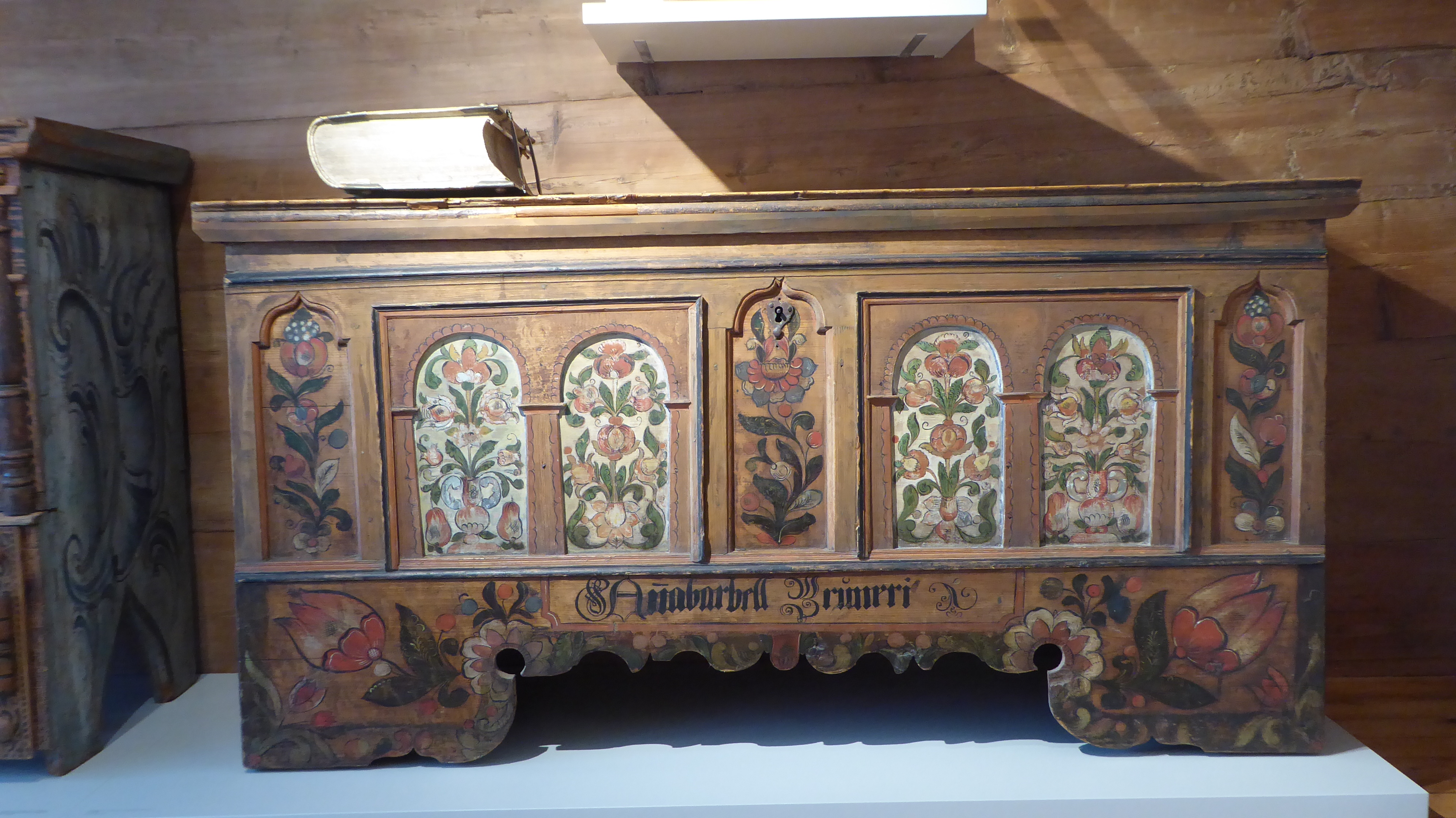
Cover photo above: Work of a Peony Rose painter anno 1784, a painted filk art headboard in the Ackerhus Museum. The fillings show the two seasons of Spring and Summer in the form of two women.
When King Maximilian II of Bavaria (1811–1864) wanted to connect to the peasants, he began actively promoting the art and customs of the people in the 19th century. With his doing he planned to counter the German unification efforts with a Bavarian national feeling. Initially suspicious of the rural population themselves, the aristocracy and the affluent bourgeoisie quickly developed a commitment to rural culture and the preservation of the tradition and Folkart. Rural culture and the preservation of the tradition led to a renaissance of rural paintings and folkart which demanded a certain standard.
The first known furniture paintings appeared in Upper Toggenburg, a region in Switzerland around 1730. Initially, mainly painted chests and cupboards were still not very popular. The motifs were initially plant-based decorations, such as flowers, fruits and tendrils, and later animals like birds and people.

The art historian Jost Kirchgraber writes about Toggenburg paintings: “It is fascinating, but extremely difficult to prove, whether it was not Pietism that helped make the world of the Reformed more colorful. Pietism was a movement that emerged in the 17th century within Protestantism and was very widespread in Toggenburg.
Elaborately designed farm furniture and small items were brought to the villages. At the same time, collections of rural culture was created, and earlier designed collections was saved from destruction. Of those who could afford, commissioned the painting of entire rooms.

That type of painted, folkart furniture demanded a certain standard, because it was a desired consumer item. The paintings were increasingly carried out by specialized workshops, so it was no longer called peasant painting in the narrower sense, but of painting based on peasant motifs.

The main center of this semi-industrially handcrafted and painted furniture was Bad Tölz. Typical are the “Tölzer boxes” with lush Rose motifs.
As seen at the Hotel Hirsch in Füssen at my last stay:



The depiction of rural life also gained interest. Professional painters settled in villages in the summer months to paint peasants in their traditional costumes. Scenes of everyday rural life established the peasant genre paintings, which soon became increasingly popular in other areas.

